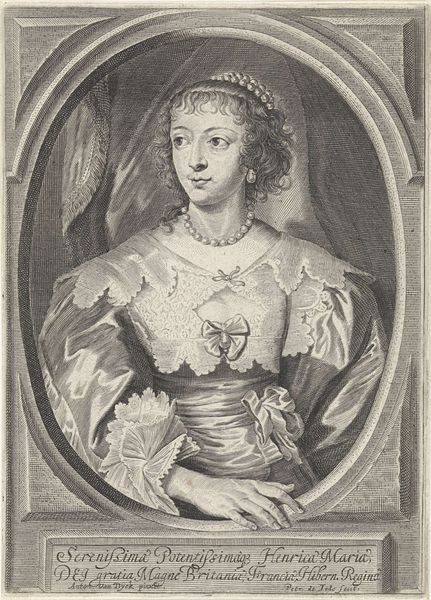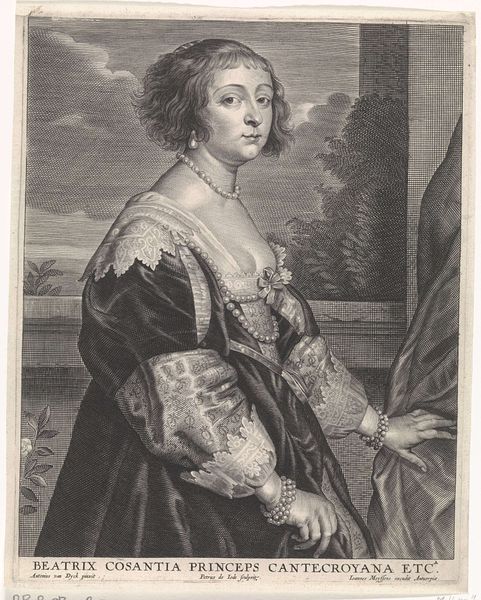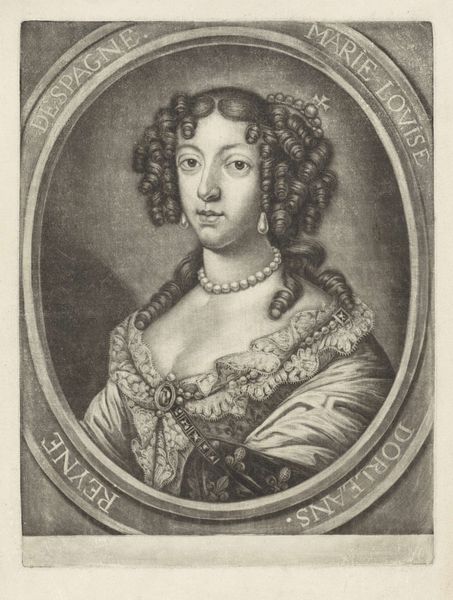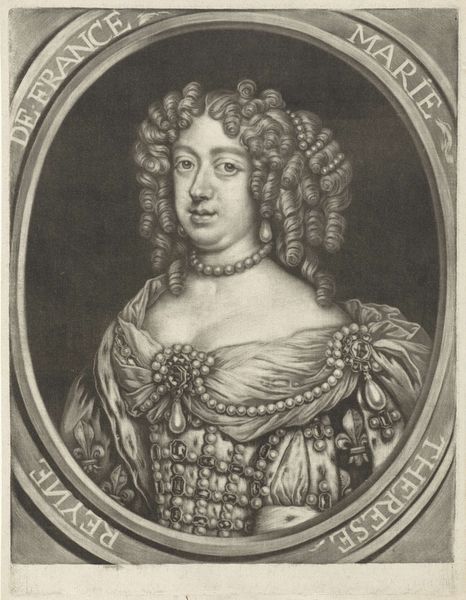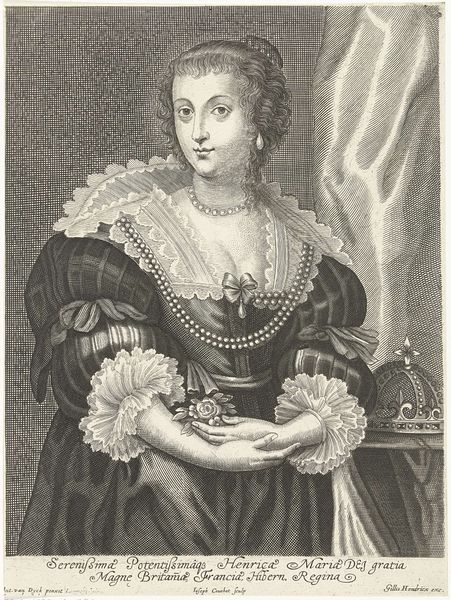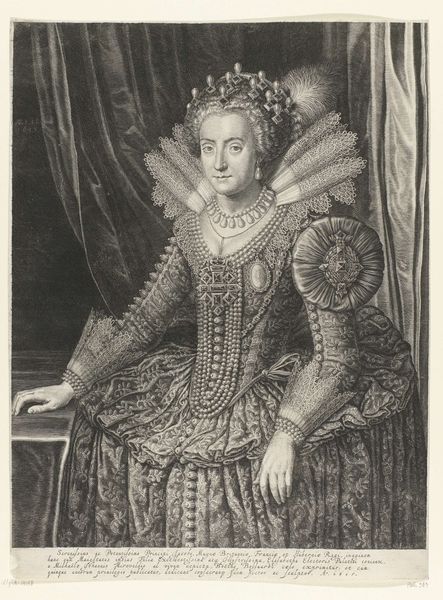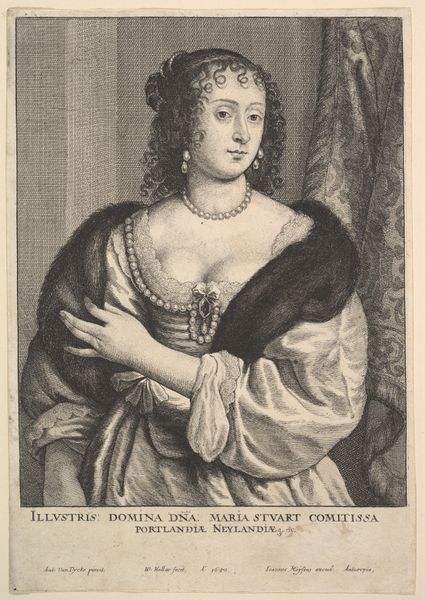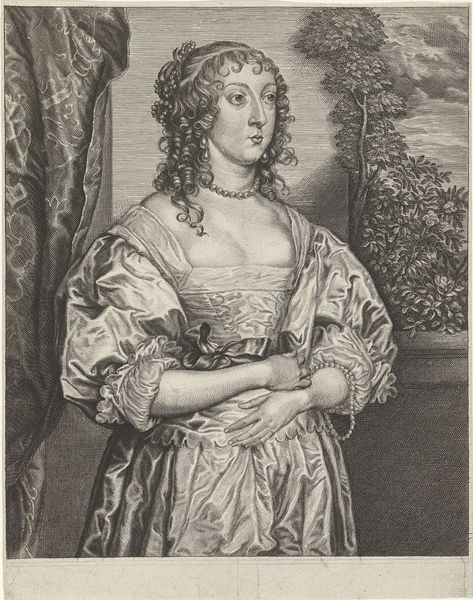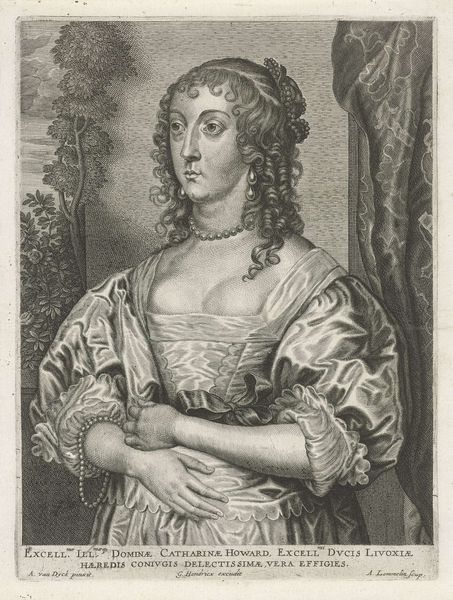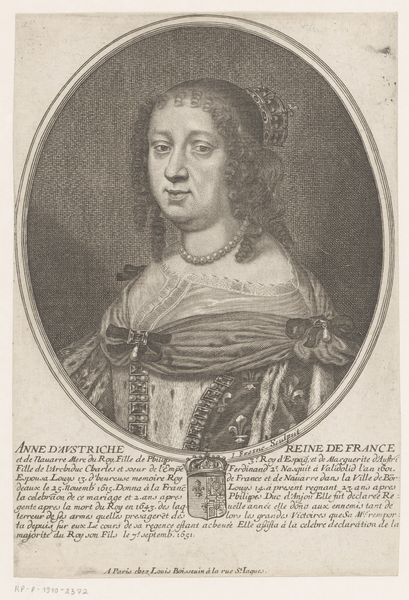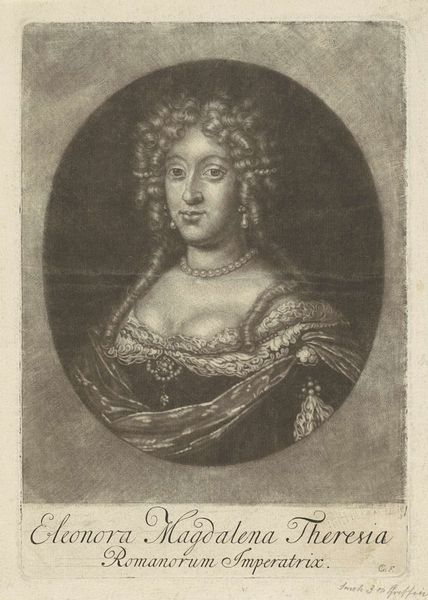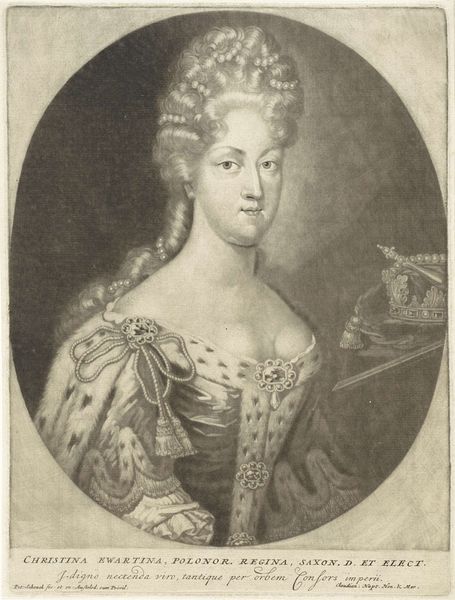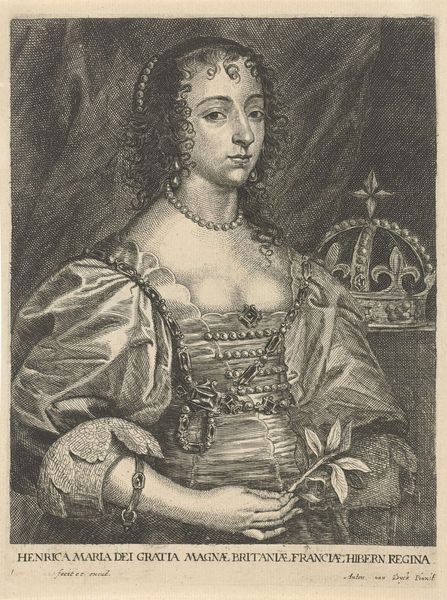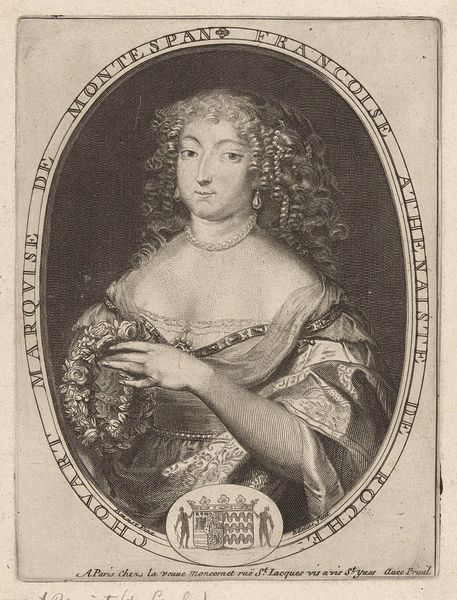
engraving
#
portrait
#
baroque
#
charcoal drawing
#
pencil drawing
#
portrait drawing
#
engraving
Dimensions: height 265 mm, width 198 mm
Copyright: Rijks Museum: Open Domain
Editor: We're looking at a print here, "Portret van Maria Clara Croff, markiezin van Havré," created sometime between 1633 and 1673. It's an engraving. It’s very formal, stately. I’m curious, how do you interpret this portrait? Curator: It’s important to situate Maria Clara within her historical context. As a noblewoman, her identity was intrinsically tied to lineage and social status. This portrait isn't just about capturing her likeness; it's about visually representing her power and position within a patriarchal structure. What does her elaborate attire signify to you? Editor: Well, clearly, wealth and status, the pearls, the lace… It feels almost performative. Curator: Exactly. Baroque portraiture often functioned as a form of propaganda. This image reinforces the rigid hierarchies of the time. Consider how her gaze avoids direct engagement; it hints at a certain reserve, perhaps reflecting the limited agency afforded to women of her station, even within positions of power. Do you see a sense of the tensions present during the Baroque? Editor: I do, now that you mention it. It's a very controlled image, yet there’s almost a vulnerability in her expression. Almost a struggle against the constraints you mention. Curator: Precisely. We must examine the tensions inherent in representing individuals enmeshed in complex systems of power. Editor: This really highlights how even something as seemingly simple as a portrait can reveal so much about the societal dynamics of its time. I never really thought of portraiture this way before. Curator: Reflecting on such dynamics enriches our appreciation, doesn’t it? It opens our understanding of power and societal expectations through history.
Comments
No comments
Be the first to comment and join the conversation on the ultimate creative platform.
